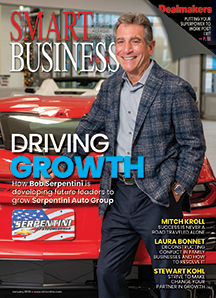A substantial amount of wealth in the U.S. is in the process moving from baby boomers to their heirs. Called the Great Wealth Transfer by many, it will see an estimated $30 trillion in assets — some sources report that figure at $68 trillion, others even higher — change hands over the next few decades.
Locally, John Petures Jr., president and CEO of the Akron Community Foundation, says in the next decade alone, an estimated $10 billion will move from one generation to the next just in Summit and Medina counties, a sum that has significant potential to do good in those communities.
“If we were to secure 5 percent of that $10 billion in funds that were established here — not 50 percent, 5 percent — we’re talking about ballpark $537 million worth of assets, added to a community foundation that already has $200-plus million in assets,” he says. “Keep doing the math: 5 percent is the payout annually for distributions. Ready for the number? $27 million worth of grant-making in a single year.”
It’s hard to argue with significantly increasing the amount of money an organization is able to give to area nonprofits. But those figures only materialize in nonprofit coffers if the ACF and its wealth-transferring fund-holders can make the case to Gen-Xers and millennials — many of whom are leaving to live elsewhere — that they should give part of that wealth back to the community, the community in which that wealth was likely generated.
Donor-centric foundation
ACF is growing and gearing up to be a facilitator of this massive generational wealth transfer. Since Petures joined the foundation almost 11 years ago, its assets have more than doubled to nearly $225 million, and it’s made $13.2 million in total grants and distributions during fiscal 2018, an all-time high for the organization.
The reason for the success?
“We became a more donor-centric organization,” Petures says. “We embrace and enhance the work of charitable people who make a permanent commitment for the good of the community. We listen, we find out what they care about, and we find ways to connect them and to maximize ways that they can be generous in benefiting those things they care about most in the community.”
To do that, ACF made what Petures calls an investment to become more competitive. It stepped up its marketing by rebuilding and modernizing its website and hired a marketing director to improve its outreach, in part through paid advertising — a first for the organization.
It also added staff, which now totals 21, double the number when Petures came to the organization in 2008. Many of these hires have roles involved in both the cultivation (attraction) and stewardship (service) of fund-holders. The move was necessary because the foundation isn’t based on transactions; it’s based on relationships.
“I learned that people don’t give to causes. People give to people,” Petures says. “And to build those relationships — and really to distinguish ourselves from the private donor-advised fund-holders — it took people to do that. It took more boots on the street in raising the money.”

